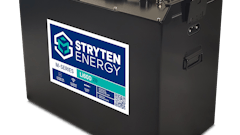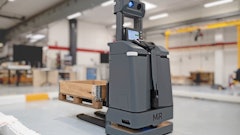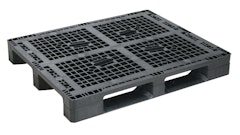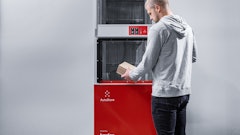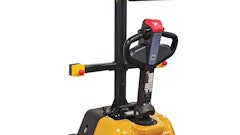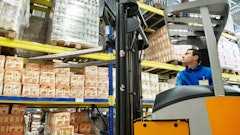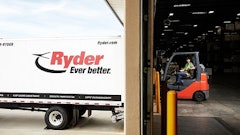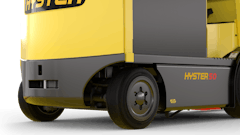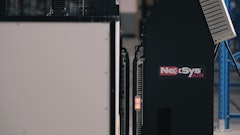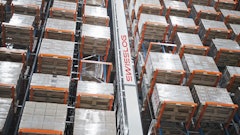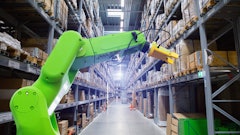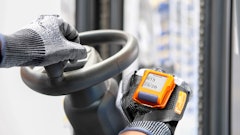
If your distribution center is running at peak performance, congratulations. Keep up the good work. Chances are your company is enjoying the fruits of this success. Throughput is flowing flawlessly and the competition is running for the hills. Times are good.
But if you think your distribution center can run more efficiently, that throughput can still be increased, costs could still be lower and manpower better utilized, then here are 10 ways to improve your warehouse efficiency:
1. Gain an understanding of the current state of your distribution center. Let’s start with the basic premise, “You don’t know where you are going until you know where you are.”
This means you must first measure and capture all data relevant to your company’s operation. This would include labor expenses with overtime separated out, number of orders processed in a given amount of time, number of lines pulled by each operator, number of forklifts in operation during that time and the expense of leasing or operating each one, overall utility costs to run the distribution center and total cost per square foot of operating space in your facility.
2. Have a clearly developed customer service policy. The most important question you should ask yourself is “What is my commitment to my customers?” The answer could be as simple as: One hundred percent of all customer orders received by 4 pm will be processed and shipped to the customer as a perfect order within 72 hours.
In this case, a perfect order would be measured by its successful on-time delivery, with no damage and all documentation and labeling complete and accurate. Determine what is realistic and achievable for your organization and what will position you in front of your competitors. Develop your internal processes to achieve that high level of service.
3. Measure touch points. Measure and record how many times an item is touched from the time it is ordered until the time it leaves the building.
Look for ways to eliminate handling items twice, keeping in mind that every time an item is touched there is the opportunity for human error. For example: Instead of picking items into a tote first and then dumping them out on a table, only to be re-packed into a carton, why not pick items directly into the shipping box?
4. Business can start picking up when companies start looking up. Traditionally, companies tend to expand their operations laterally as they grow and the number of stock keeping units (SKUs) increases.
It’s easy to forget that your facility may have more available overhead space that can be utilized. By elevating some or most of the processing, packing or picking operations, use of free cubic overhead space may allow the distribution operation to extend the number of years within the existing facility. This bodes especially well from an economic standpoint for companies with favorable lease rates or those that own their building outright.
5. Gather data on the SKUs you currently have in inventory frequently. Slot your facility carefully to ensure that each SKU is mapped for the shape, weight and velocity of its particular use. Identify how fast the items move from a demand perspective, according to class and make sure the most active SKUs are assigned to locations closest to input/output points in order to maximize throughput efficiency.
Measure the dimensions and weights on all existing and in-bound SKUs. This can be accomplished accurately by using a CubiScan or other suitable measuring device. Knowing the volume of each SKU will allow you to slot efficiently, facilitate accurate check weighing, if appropriate, and accommodate current and future picking technologies.
The data also allows you to take advantage of the cubing features of most Warehouse Management Systems (WMS) in order to calculate the appropriate-sized carton to use for a respective order. The difference between using a larger and smaller carton when shipping an order may not seem like a high-priority decision. But a smaller carton costs less and reduces the dead space that usually requires fillers such as Styrofoam peanuts and plastic pouches.
6. Consider or re-think your current picking technology. Assuming you have measured accurately the number of lines being pulled by each operator, now may be the time to evaluate the feasibility of using a picking technology such as Radio Frequency (RF), Pick-To-Voice or Pick-To- Light, thus eliminating paper based picking which may not be cost-efficient for your shipping needs. Factors in making the proper picking technology decision should include density of SKU locations, required throughput, characteristics of the items you are picking, and any specialized procedures in place, such as serial number tracking.
7. Select the picking method that is right for your company. Evaluate the merits of piece picking, where a picker picks one order at a time by walking up and down each pick aisle until the entire order is complete. How cost-effective is this versus, say, batch picking (a picker picks all orders at the same time in the same pass), zone picking (pick area is broken up into individual pick zones, similar to an assembly line), or wave picking (all zones are picked at the same time, rather than having orders move from zone to zone)?
8. Practice task interleaving. This refers to the process and method of combining your active picking with the put-away process. Warehouse Management Systems (WMS) utilize logic to direct lift truck operators to put-away a pallet while enroute to the next full pallet pick. For example, if a forklift operator receives instructions to put away a pallet, the WMS will initiate a pallet pick so the forklift operator does not come back without a load. Since the average forklift operates on a 33.5 lb. LP tank, that costs an average of $25-$30 to fill, with a tank life of only about eight hours, you can see the cost-effectiveness of not coming back empty-handed.
9. Keep system downtime to a minimum. Conveyors, carousels, palletizers and other devices such as tapers, case erectors, and stretch wrappers require planned maintenance. Equipment should be inspected, maintenance records stored with easy access, and small problems corrected immediately.
Automated distribution centers should conduct planned maintenance at regular intervals, particularly belt tracking for conveyors, taking motor temperatures and lubricating as necessary. Spare parts, such as motors, belts, bearings and rollers, should always be on hand. The investment in a good maintenance plan will keep your orders moving and potential large investments in replacing equipment to a minimum.
10. Examine your equipment’s vulnerable points from a power management perspective. Mother Nature is not always a friend to a distribution center. If lightning issues or erratic power outages are frequent in your area, protect your distribution center from potential power spikes by using surge protectors and conditioning your service from the local electric utility provider.
Don’t let the minimal cost of surge protection cause major damage to your equipment or wipe out the programming in your controls. Remember, one damaged power supply can shut down a sorter, resulting in hundreds of thousands of dollars in overtime and delayed transportation expenses.
These 10 ways to improve your material handling efficiency can help increase the amount of perfect orders being shipped, and in so doing ensure customer satisfaction and promote increased sales. And along the way you’ve successfully answered that all-important question, “What is my commitment to my customers?”



